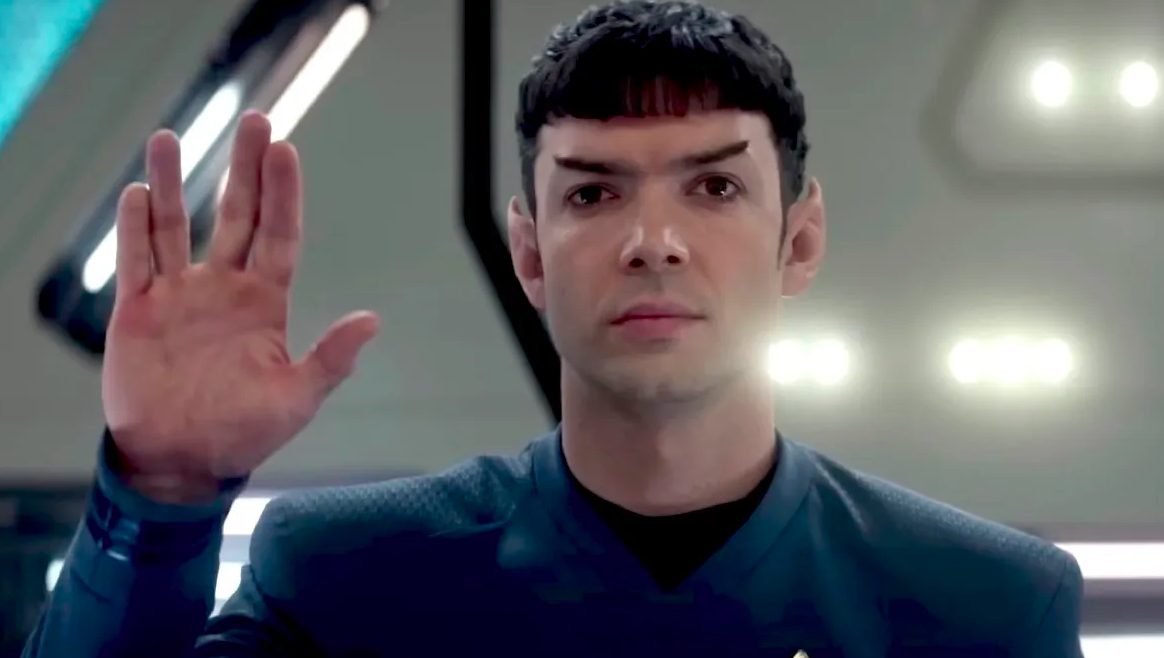Star Trek: Strange New Worlds: Should You Watch It? (Season 1& 2 Review)
It’s hard to believe that Star Trek, the most famous science fiction space show of all time, has been around since before humans actually walked on the moon. Since debuting in 1966, there have been 13 Star Trek movies and a whopping 901 episodes of various Star Trek television shows.
With the sheer amount of content that already exists in its universe, it’s nearly impossible for a new Star Trek series to manage to feel fresh while at the same time maintaining a sense of connectedness to the shows and motion pictures that came before it. Star Trek: Strange New Worlds, however, is up to the task.
What’s Old is New Again
Strange New Worlds is a spin-off (and an improvement) off of Star Trek: Discovery that follows the crew of the USS Enterprise in the decade prior to James T. Kirk becoming the ship’s captain. As Strange New Worlds takes place in time before the events of the original 1960s Star Trek, many of the characters on the show, most notably Spock, will be recognizable to most viewers.
Overall, the show does an excellent job of appealing to diehard Star Trek fans, while still being totally accessible to those who know absolutely nothing about Star Trek. Older fans will be able to recognize where certain events fit within a larger Star Trek timeline in addition to seeing younger versions of characters they're already familiar with.
At the same time, the show serves as a great first introduction to Start Trek as it feels more current and fresh than past iterations of the show. Any additional Star Trek information viewers go into Strange New Worlds with only serves as a bonus to their experience; past Star Trek knowledge is never a necessity.
An Episodic Nature
In an age when TV shows often feel like extended movies with a single storyline stretched over a season’s worth of episodes, a show like Star Trek: Strange New Worlds feels pretty refreshing. While episodes of the show are released in chronological order, with character relationships being explored and built on as the show’s two seasons progress, each individual episode tells its own self-contained story.
As a result, the show’s writers are more free to experiment with different genres and by focusing more on specific characters in different episodes. Each roughly one hour long episode ends up feeling more like a mini-movie with a distinct beginning, middle, and end, which is unlike many modern shows where the bulk of a season can be spent plodding along waiting for the big conclusion.
Overall, I think the episodic format of Strange New Worlds works really well. However, having episodes be so distinct and different from one another definitely invites comparisons between episodes.
I think that there are a few really great episodes (like Season 1’s finale, “A Quality of Mercy,” and “Tomorrow and Tomorrow and Tomorrow” and “Subspace Rhapsody” in Season 2). There are a few duds too (“Lost in Translation” and “These Old Scientists”). Most of Strange New Worlds’ two seasons though is made up of what I’d categorize as “very good, but not quite great” hours of TV.
Captain Pike & Friends
It’s important for any Star Trek series to have a good name to differentiate itself from those that came before it. In this way, Strange New Worlds falls pretty flat with a fairly generic and bland title. Sure, sometimes our crew is going to “new worlds,” but definitely not in every episode. Calling the show “Star Trek: Captain Pike & Friends” would make the show sound too much like it’s a cartoon for children, but it would at least more acknowledge the close, interpersonal relationships of the crew that are crucial to the story.
One of the strongest aspects of Strange New Worlds is the acting of the cast and the colorful, unique characters we’re presented with (even if said characters are sometimes younger versions of characters that already exist in the Star Trek universe). A title that somehow alluded to the importance of the crew would have been more fitting as opposed to putting the emphasis on different worlds. If anything they could have just named the show “Star Trek: 2259,” calling attention to the year the show is set.
Minor gripes about titles aside, I would definitely recommend Star Trek: Strange New Worlds to anyone interested in science fiction. It usually provides a good example of some solid outer space storytelling. While not every episode is fantastic, the crew of the USS Enterprise is great as a whole, and I’m definitely looking forward to watching more of the series when it’s eventually released.
Grade: 8.5/10




